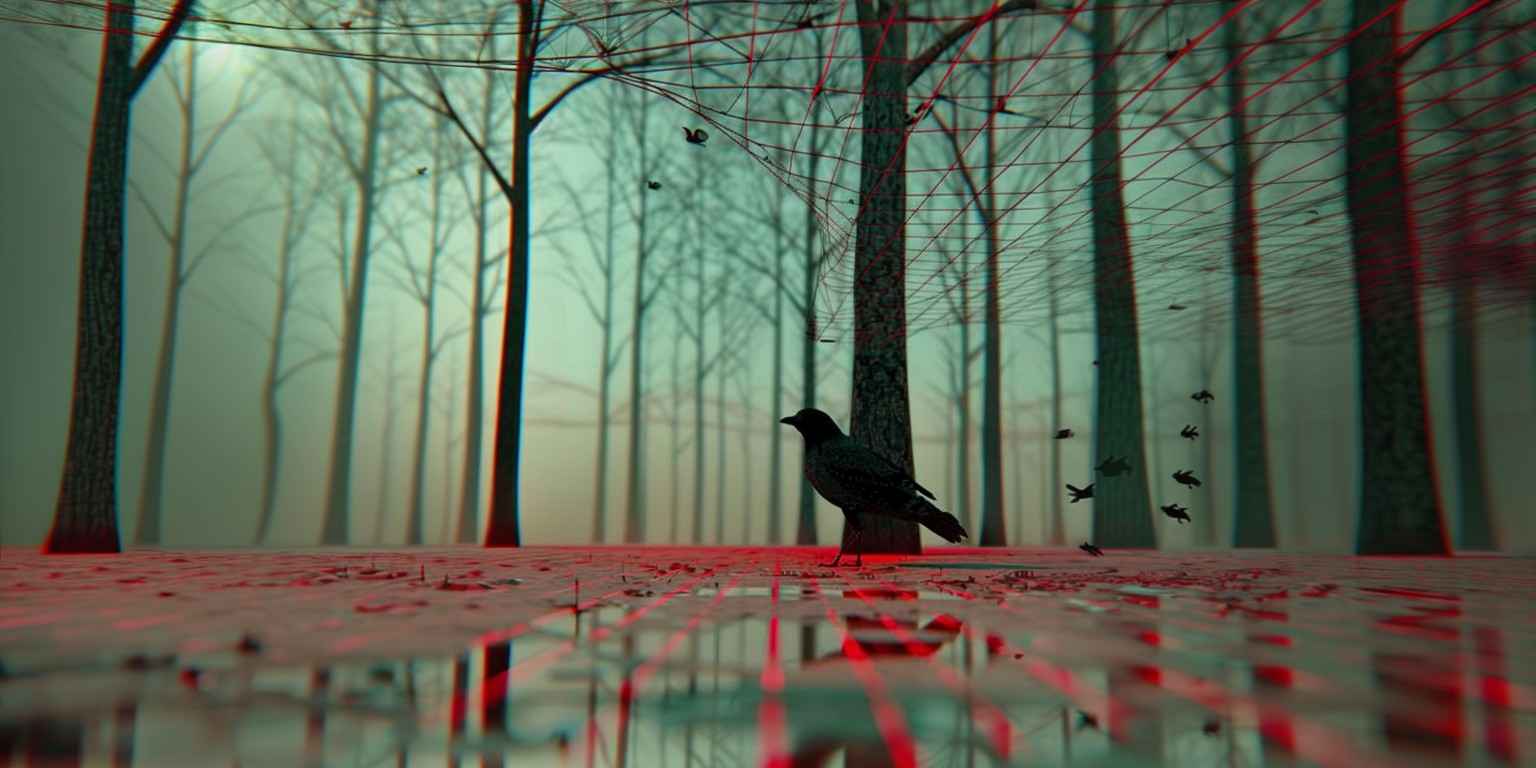The Greek word ekphrasis signifies the verbal description of a work of art, or of a scene. It’s a rhetorical device, a genre of writing that might seem especially unpromising. An art critic’s description of a work of visual art might appear to be an exercise in futility, a thousand words about a picture. George Steiner in ‘Real Presences: Is There Anything in What We Say?‘ (1986) wondered about a world in which criticism did not exist, in which the only valid response to a work of art would be another work of art. For Plato, an ekphrastic description was by its nature trivial: ekphrasis of an object such as a bed was less real than a painting of the bed, which in turn was less real than the bed itself, which was finally less real than the ideal form ‘bed’ on which the object was modelled by its maker.
Yet what if all art is itself ekphrasis? According to Plato’s theory of the ideas, any act of creativity refers in some sense to an ideal form that exists in a higher dimension of reality. In other words the artist is ‘seeing’ an Idea. Usually Plato defaults to the craftsman rather than the artist, contemplating the Idea of ‘chair’ or ‘bed’, which reflects his ambivalence towards art. In ‘The Republic’ he has Socrates propose that the unruly artists be exiled from his ideal commonwealth; yet in ‘Phaedrus’ Socrates says that the artist’s theia mania (divine madness) goes further than a logical mind can in journeying towards the real and the Good.
Similar questions about art are explored by Shakespeare at the end of his play ‘A Midsummer Night’s Dream’, where Theseus and Hippolyta (Act V, Scene 1) wonder about the reports they have heard of what happened in the woods. It’s worth quoting the entire passage, which is one of the most influential meditations in all of literature on the nature of the imagination:
Hippolyta
‘Tis strange, my Theseus, that these lovers speak of.
Theseus
More strange than true; I never may believe
These antique fables, nor these fairy toys.
Lovers and madmen have such seething brains,
Such shaping fantasies, that apprehend
More than cool reason ever comprehends.
The lunatic, the lover, and the poet
Are, of imagination, all compact.
One sees more devils than vast hell can hold –
That is, the madman. The lover all as frantic,
Sees Helen’s beauty in a brow of Egypt.
The poet’s eye, in fine frenzy rolling,
Doth glance from heaven to earth, from earth to heaven.
And as imagination bodies forth
The forms of things unknown, the poet’s pen
Turns them to shapes, and gives to airy nothing
A local habitation and a name.
Such tricks hath strong imagination,
That if it would but apprehend some joy,
It comprehends some bringer of that joy;
Or in the night, imagining some fear,
How easy is a bush supposed a bear.
Hippolyta
But all the story of the night told over,
And all their minds transfigured so together,
More witnesseth than fancy’s images,
And grows to something of great constancy,
But howsoever strange and admirable.
Throughout this passage there is an exploration of ambivalent notions of art, love and madness. Imagination apprehends “More than cool reason ever comprehends”, and for Theseus this “more” means ‘more than is really there’. His final remark, “How easy is a bush supposed a bear” is intended as a mocking dismissal of illusions from the standpoint of an elevated “cool reason”. Hippolyta counters that “howsoever strange and admirable”, the dream seems to have been shared: “all their minds transfigured together”.
And in Theseus’ description of the poet, I think we glimpse his own admiration for the “fine frenzy”, similar to Plato’s acknowledgement of poetic madness that reaches a deeper truth. If the poet’s imagination “bodies forth / The forms of things unknown”, this is not the same as saying that the poet is seeing something illusory. “Things unknown” are not simply illusory. Theseus wants to dismiss “antique fables” and “fairy toys”, and yet the audience has seen fairies and fables! Hippolyta’s wonder and doubt is closer to the truth of the play than Theseus’ well-argued reasons. As I’ve explored elsewhere, for Shakespeare, fairies and poetry go together.
The meaning of ekphrasis lies in its translation of one art form to another; but in the deeper sense we are using it here, all writing that has any form of artistic inspiration is ekphrasis. The poet’s eye is looking at heaven, and then at earth, and then at heaven again (the “fine frenzy rolling” suggests the eyes rolling back in the head, in a transport indistinguishable from mystic states). The poetry that results forms an impossible or paradoxical bridge between these two spheres, as it “gives to airy nothing / A local habitation and a name.”
Art, if it really is art, is paranormal; and a painting or a play is also a portal.
This reflection emerges from many discussions with a writer client of mine, to whom I’m indebted for the concept of ekphrasis. Without disclosing anything about our work together over several years (this is published with their consent), it has centred more recently on exploration of their academic work on a beloved author who, it is not an exaggeration to say, saved their life. The life-saving quality is not due to ‘identifying’ with characters in the text, or with political or social insights, or in biographical admiration of the author’s life or personal qualities, but because of what they can see in the author’s writing. Academic study of and writing about the text then becomes (in their terms) ekphrastic, acknowledging the perception of a strange otherness, and the untranslatable nature of what is being contemplated.
In the writings of the mystics, this would be called apophatic, a negative assertion about the experience of the divine as “neither / nor”. Whatever can be said of this otherness, it’s not that. The famous Indian formulation, Neti, Neti, can be translated as “not this, not that” or as simply “No”, “No” is another expression of this. To “explain” is to “make plain”, to flatten out: a reduction in the number of dimensions. Yet how to be true to a reality that is hyperdimensional?
This has deep therapeutic implications. I’ve argued previously that therapy may depend on altered states of consciousness. This might be as simple as “get out of your head and into your feelings”; it might involve dream-analysis; it might mean somatic exploration of body sensing; or it might involve psychedelic states. And the point is that all of these states (and many others) connect with each other. The psychotherapist Arnold Mindell in ‘Dreambody: the Body’s Role in Revealing the Self’ (1982) sought to explicitly connect dream with physical sensations in the body. Freud called dream the royal road to the unconscious, but perhaps it would be more accurate to say that all roads that lead to the unknown are royal roads.
Therapy is not so much about healing, as it is about finding the blockages to the inherent healing that is always wanting to happen. If art is an altered state, either in its creation or in its appreciation, then it too will have a therapeutic function. When art connects us to higher-dimensional states of consciousness, it gives us access to more connectedness. Trauma is a dissociation, a protective disconnection. If we can reassociate safely, then we can get better.
This may be why madness, love and art go together. All of them involve a rise in connectedness, and in the case of madness the connection is too much for the psyche to bear. Love can also drive people to madness or death. But despite the frequent trope in weird fiction of a book or painting or play that drives us mad – for example Robert Chambers’ ‘The King in Yellow’ (1895) – art rarely, if ever, does this. It hardly needs saying that works of art that revolve around the possibility of demonic art or, as in Benjamin Labatut’s wonderful ‘When We Cease to Understand the World’ (2007), demonic science, are not themselves possessed of demonic powers. But in raising this possibility, they helpfully raise the stakes of what art can really do. And this is necessary, in a world where we have begun to forget about art’s power. The demonic and the angelic go together, always. If we are determined to remain always within ordinary waking consciousness, we will be unconscious of everything else. For better or for worse, we will be fated to tread always in the same places, wearing an ever deeper groove into the bedrock of an impoverished reality.
The ekphrastic move, in which we acknowledge a work of art as a portal to a higher reality that cannot ever be described (though we continue to try), is characterised by an attitude of piety, awe and reverence; closely related to what was once called “the fear of God”. Despite encouragement everywhere in our culture to take an ironic stance towards beliefs in the divine and demonic, we may need to abandon such prejudicial knowing. To quote Shakespeare once more,
They say miracles are past; and we have our philosophical persons, to make modern and familiar, things supernatural and causeless. Hence is it that we make trifles of terrors, ensconcing ourselves into seeming knowledge, when we should submit ourselves to an unknown fear.
‘All’s Well That Ends Well’ (Act II, Scene 3)
Fear is a dirty word in our culture, like death, grief and despair. Yet in submitting ourselves to an unknown fear, we might find some medicine that we have lost.
Copyright © 2022 My Sunset by Bogdan Bendziukov.




